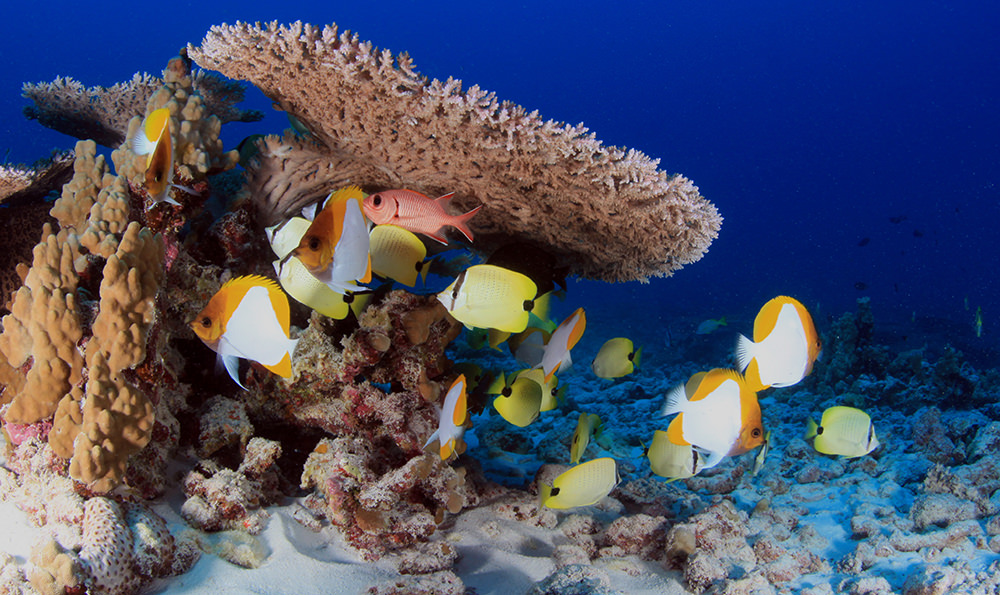Each national marine sanctuary has its own set of regulations to protect important natural, cultural, and historical resources, while still allowing authorized access and responsible use of these areas. Regulations for Papahānaumokuākea National Marine Sanctuary were developed to supplement and complement those regulations already in place for Papahānaumokuākea Marine National Monument.

The regulations for Papahānaumokuākea National Marine Sanctuary are anticipated to take effect in March of 2025 and are available at Part 922, Title 15 of the Code of Federal Regulations, in Subpart W.
Sanctuary Access
Access to the sanctuary is prohibited except for:
- Pursuant to a sanctuary permit
- Emergency response actions, law enforcement activities, and activities and exercises of the armed forces
- When conducting non-commercial fishing activities in the Outer Sanctuary Zone authorized under the Magnuson Stevens Act
- When conducting scientific exploration or research activities by or for the secretary of commerce or the secretary of the interior when the activity occurs within the Outer Sanctuary Zone
- Passing through the sanctuary without interruption
- Note: For vessels passing through areas of the sanctuary that are contained within the reporting area surrounding the Particularly Sensitive Sea Area, ship reporting may be required. See this page for more information on ship reporting requirements.
The sanctuary permitting process will be integrated into the existing permitting process for Papahānaumokuākea Marine National Monument. For more information about sanctuary access and permit requirements, please visit the Papahānaumokuākea Marine National Monument permit page.
Sanctuary Prohibited or Otherwise Regulated Activities
The following activities are prohibited within the sanctuary. Note that the list below should not substitute for understanding the final regulatory details for Papahānaumokuākea National Marine Sanctuary, which can be found in 15 CFR Part 922 Subpart W Papahānaumokuākea National Marine Sanctuary:
- Exploring for, developing, or producing oil, gas, or minerals, or any energy development activities
- Using or attempting to use poisons, electrical charges, or explosives in the collection or harvest of a sanctuary resource
- Introducing or otherwise releasing an introduced species from within or into the sanctuary
- Deserting a vessel
- Anchoring on or having a vessel anchored on any living or dead coral with an anchor, anchor chain, or anchor rope
- Commercial fishing, or possessing commercial fishing gear except when stowed and not available for immediate use
- Failing to comply with the vessel monitoring system requirements
- Failing to comply with ship reporting requirements
- Non-commercial fishing, or possessing non-commercial fishing gear except when stowed and not available for immediate use
- Drilling into, dredging, or otherwise altering the submerged lands; or constructing, placing, or abandoning any structure, material, or other matter on the submerged lands
- Removing, moving, taking, harvesting, possessing, injuring, disturbing, or damaging; or attempting to remove, move, take, harvest, possess, injure, disturb, or damage any living or nonliving sanctuary resource
- Attracting any living sanctuary resource
- Touching coral, living or dead
- Swimming, snorkeling, or closed or open circuit scuba diving
- Discharging or depositing any material or other matter into the sanctuary, or discharging or depositing any material or other matter outside of the sanctuary that subsequently enters the sanctuary and injures or has the potential to injure any resources of the sanctuary, except for:
- Fish, fish parts, or chumming materials (bait) used in or resulting from lawful fishing activity, provided that such discharge or deposit is during the conduct of lawful fishing activity within the sanctuary
- Discharge incidental to vessel operations such as approved marine sanitation device effluent, cooling water, and engine exhaust, consistent with Federal statute or regulation
- Within special preservation areas or the Midway Atoll Special Management Area, discharging or depositing material or other matter is limited to vessel engine cooling water, weather deck runoff, and vessel engine exhaust, consistent with federal statute or regulation
- Anchoring a vessel

